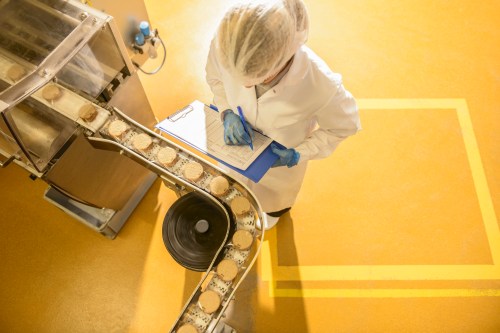Our editors independently select these products. Making a purchase through our links may earn Well+Good a commission
Avocados may be the unofficial food mascot of the wellness world, but matcha is without a doubt the beverage served on the side. I’m willing to bet that you sip—and Instagram—the vibrant green drink more than inflammation-fighting golden milk lattes, a keto-approved Bulletproof coffee, or calming chamomile teas.
Matcha has become so omnipresent that it’s natural to wonder how it even got to be so popular. Like someone you’ve met a dozen times yet still don’t know their name, the health benefits of matcha may seem like something you “should know” by now, but don’t. We’ve got you covered. Consider this your official matcha 101 handbook. Its origin story, health benefits, buying tips, and expert whisking tips are all included here, courtesy of Matcha: A Lifestyle Guide co-author, Jessica Flint. (Arguably the world’s prettiest matcha book.)
What is matcha—and how it got to be everywhere
Matcha may be a “trendy” drink here in the States, but it’s actually been around since the twelfth century, when the Chinese brought it to Japan and it started being used in elaborate tea ceremonies. Flint says that matcha is a type of green tea, but they aren’t exactly the same. “What makes matcha different than regular green tea is that the green leaf leaves are ground into a powder,” she says. The powder is then dissolved directly into water and consumed as opposed to regular green tea, which steeps the leaves in water then removes them. Matcha’s unique preparation makes its benefits more potent (more on what those are in a minute).
Registered dietitian Tracy Lockwood Beckerman, RD, explains the difference between green tea and matcha in more detail below:
As for how it went from a ceremonial tea to the trendiest healthy drink in wellness circles, Flint has a few thoughts. “One reason is that the vibrant green color makes it very Instagram friendly,” she points out. But Flint says that people becoming aware of the health benefits is likely another reason the drink has become so popular.
What are those health benefits, exactly? Registered dietitian Tracy Lockwood Beckerman, RD says the tea is high in antioxidants and has a high concentration of epigallocatechin gallate, aka EGCG, a compound linked to lowering inflammation and reducing the risk of cancer. “Matcha also contains theanine, an amino acid which may help in reducing your stress,” Beckerman says.
Yet another health benefit to matcha—and another reason for its popularity, according to Flint—is that matcha has caffeine (between 30 and 70 milligrams per cup, compared to 95 milligrams in a cup of black coffee) and can give a boost in energy, but doesn’t result in a crash later. “Matcha is known for providing energy steadily throughout the day without the caffeine crash we often experience from coffee,” she says.
How to make sure you’re getting the good stuff
Not all matchas on the market are created equal, and Flint has some key tips for making sure the matcha you’re shelling out for is actually good quality, full of the health benefits you aim to get from the tea. Her first tip: Check the label to see where it’s being sourced from. “Similar to how true champagne is only from Champagne, France, true matcha is only from Japan,” she says.
Flint also says authentic matcha is sold as a loose powder, not already tucked in a tea bag. “Another way you can tell if matcha is good quality is by the color,” she says. “It should be a rich green, not a dull, muted color,” she says. If your matcha is closer to the color of mashed peas than emeralds, it’s likely not the greatest quality.
If you’re buying matcha with the intention of cooking with it, Flint says to look for a culinary grade matcha instead of one labeled as “ceremonial.” “It just works a bit better in the kitchen,” she says.
The same guidelines apply if you’re getting your matcha from a cafe. Eye the color and ask the barista where the tea is from. “I’ve found that if the servers don’t really know much about the matcha they’re serving, not even knowing where it’s from, it’s often not the best quality,” Flint says. “Some places even buy it in bulk and it’s mixed with flavorings or sugar.”
How to prepare matcha tea
If you’ve ever ordered matcha out, you’ll notice that it’s typically whisked with water or milk in a ceramic or glass bowl—a bit more complicated than dropping a Lipton tea bag in a mug of hot water. “The reason why it’s whisked is because the powder particles are not water soluble, which means they won’t dissolve in water or milk,” Flint says. “If you try to just stir the powder with a spoon, it will just get clumpy; you need to whisk it to really get it to blend and to keep the powder particles from just sinking to the bottom.”
Don’t let the whole whisking thing put you off of matcha. Take a page out of Flint’s book and make an “M” shape with your whisk as you mix up the powder to ensure that you’re getting a good consistency. Or go even more low tech with this on-the-go method: “If you put matcha in a water bottle and shake it up, that blends the powder with the liquid just as well,” she says.
Some trends are all hype and no substance, but matcha is one that definitely delivers in terms of health benefits. It really isthe avocado of drinks, isn’t it?
Check out this recipe for a matcha margarita and this one for matcha pancakes.
Sign Up for Our Daily Newsletter
Get all the latest in wellness, trends, food, fitness, beauty, and more delivered right to your inbox.
Got it, you've been added to our email list.










